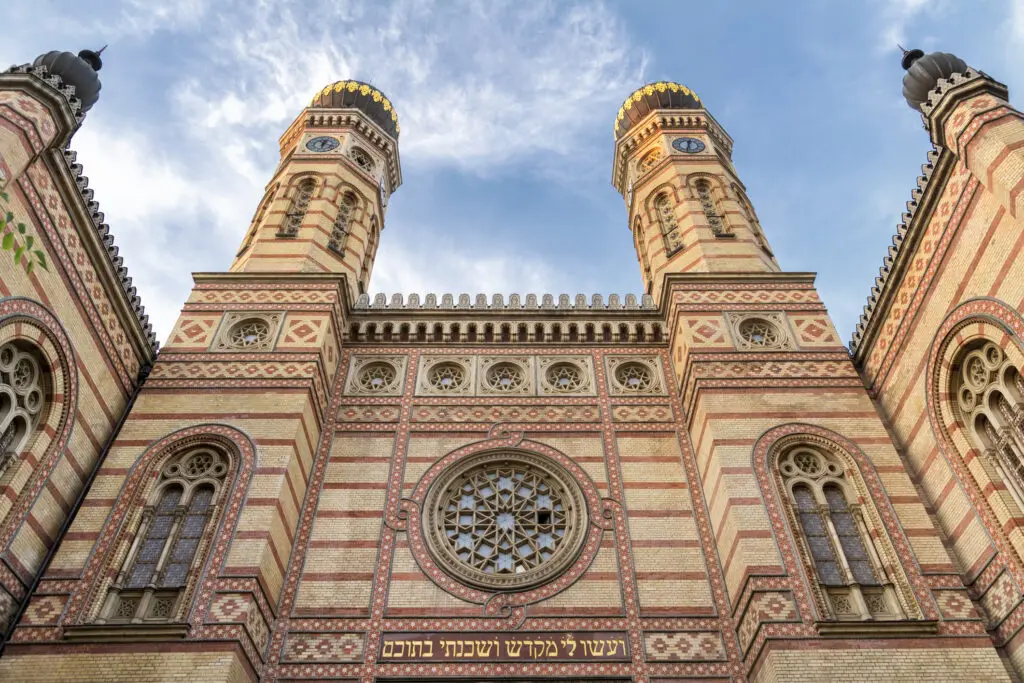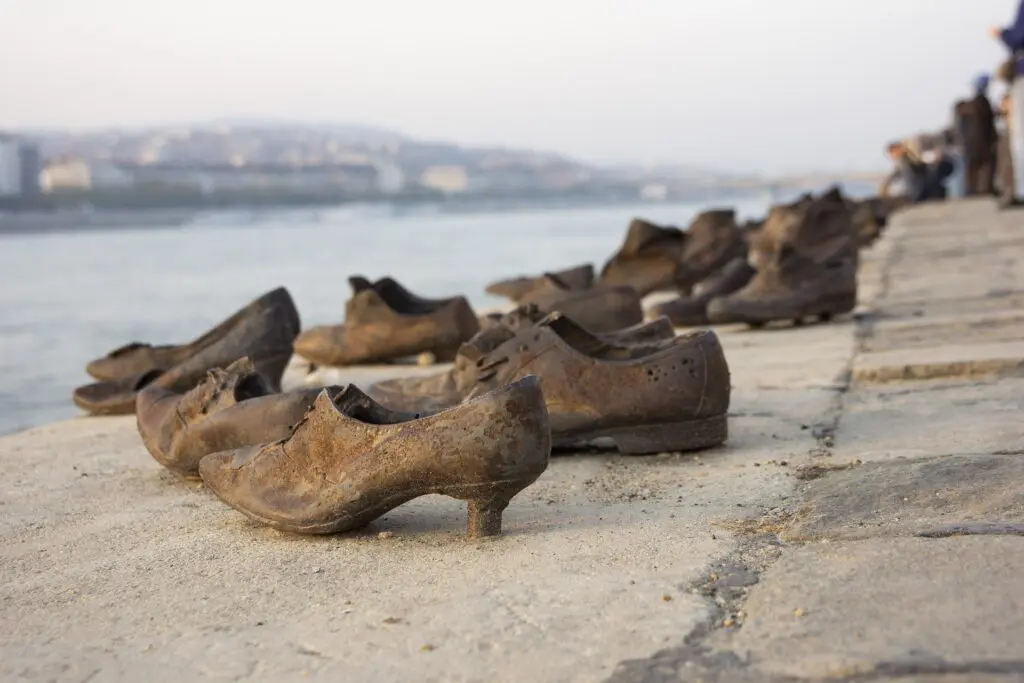Religious Jewish life in the European post-communist countries, along with other religions, has had a chance for a renaissance after the fall of communism. Hungary has historically been an important hotspot for Hasidic Jewry and the birthplace of Neolog Judaism. It is also considered to be a welcoming country for Jews.
Jump to a section of this article
Communities
There are four Jewish communities in Budapest and Hungary, the Neologues, the Orthodox, Statusquo Ante (Chabad-Lubavitch) and the Progressive, all with sparkling and vivid community life.

The Grand Synagogue
The most remarkable Jewish point of interest in Budapest is the Grand Synagogue in Dohány Street, which belongs to the Neolog community. There’s an endless debate if this or the one in Berlin is bigger, this is higher, the other is broader… Either way, you should come and see it for yourself for a few more reasons:
- The Central Synagogue in Manhattan is a near-exact copy of the captivating Romantic and Gothic building in Budapest
- There is a cemetery next to the Grand Synagogue, which is not customary at all but this was the only way to bury Jews in dignity who died in the ghetto during WWII
- The Raoul Wallenberg Memorial Park with the weeping willow statue sculpted by Imre Varga is a place where one can commemorate the deceased and those who tried to save them from a merciless and ignominious death
The Grand Synagogue is one of the major tourist attractions in Budapest and one should not miss a visit. Our offer is made of various Jewish walking tours in hope that everyone can find a match.


The Orthodox Synagogue
The idea of constructing an Orthodox Synagogue complex arose after the split of Budapest Jewry into three branches. Due to the original plans it is more than just a synagogue. The construction of community headquarters, a kindergarten, a school and a public kitchen were also on the agenda.
- The Orthodox Synagogue is also referred to as the Grand Synagogue of the Orthodox community
- It is one of the most creative Art Nouveau style synagogues in the region. The plans conceived in the spirit of Hungarian Secession and were complemented by the influence of Viennese Jugendstil
- The plot in Kazinczy Street was narrow, therefore the wing buildings flanking the facade were terraced
Several mikvahs were in use until WWII and the one that remained in Kazinczy Street was reconstructed in 2004. In order to clean its water and make it kosher again they poured 1000 liters of kosher red wine into the cistern and pumped it out until transparent clear water came out the pipes.
Rumbach Street Synagogue
The third synagogue, the Rumbach Street Synagogue was designed by Otto Wagner, the famous Viennese architect and served as a place of worship for the more conservative members of the Neolog community. Badly damaged during WWII, it was only recently restored in its original state and style. The Rumbach Street Synagogue will operate as a sacral and cultural space in the future.

Hidden Synagogues
Hidden places of worship can be found all around the city. Hungary, an important hotspot of Hasidism, a branch of the poorer Jews have had their home-synagogues in the Jewish quarters of Budapest. Just to mention a few of these, the Teleki Square Synagogue, the Hegedűs Street Synagogue and the Buda Castle Synagogue.
Jewish Cemeteries in Budapest
Two grand Jewish graveyards used to serve the communities for funerals. The one in Salgótarjáni Street is a Neolog cemetery and has not been in use since 1950. The fantastic mausoleums and richly ornamented tombs have almost perished but finally an institute of the state has taken care of the reconstruction works. Today cemetery walks are offered for visitors. The other, still active graveyard in Kozma Street also possesses some noteworthy mausoleums in Art Nouveau and Art Deco style. Visit to the cemeteries is free of charge.
Finally, all the three most important temples in the Jewish Quarter await believers for prayer and visitors who would like to learn more about the history of Budapest Jewry.
Jewish Food in Budapest
There are quite a few Jewish restaurants which, if you were raised in a Jewish family, will bring back the taste of your childhood. The only dish which is very hard to get is the ‘gefilte fish’ but other than that your stomach will be spoiled. Should you long for a good matzo ball soup, a sholet, a Jewish egg, options are aplenty. The majority of the traditional and Izraeli style Jewish restaurants are situated in the Jewish Quarter and a few beyond. Macesz Bistro, Kőleves, Ghetto Goulash, Rosenstein, Fülemüle offer dishes from the traditional side, Dobrumba, Mazel Tov, Babka serve typical dishes from the Middle East with a fair Jewish flair. Just two or three restaurants offer kosher meals but unfortunately the reviews of these are not the most inviting. Kosher produce is sold in a kosher shop in the Jewish Quarter.
There’s a sweet treat you must taste, the ‘flodni’. This typically Hungarian / Central European pastry consists of everything from the gifts of the God. Thick plum marmalade, walnut, apple and poppy seed layers in a strict order, ‘flodni’ is colorful, rich and hearty. Our favorite source for this exceptional treat are the Fröhlich Kosher Confectionery.

Outing
The numerous Jewish holidays result in a vivid community life regardless of the branch. Jewish holidays are commemorated in synagogues, community houses as well as in open spaces or lately online. The Bálint Ház organizes family events for every Jewish holiday from Purim onward. Soukot is usually held in parks and feels like a little festival. A more festival-like cultural event is the annually recurring Judafest which takes place in the 7th district one week before Rosh Hashana. Admission is free of charge, visitors are welcome to participate in the events, learn more about everyday Jewish life and dine well.
The Hungarian Chabad-Lubavitch community celebrates and commemorates the holidays, organizes community events for kids, women and men in the freshly renovated synagogue in Old Buda, which is worth checking out. A grand Empire style temple totally destroyed during WWII stands today in its original, magnificent beauty.

As one of our destination managers and city hosts Judit bings to bear a wealth of experience in travel and tourism. She loves exploring the city, its surroundings and further afield in Hungary with her young family.